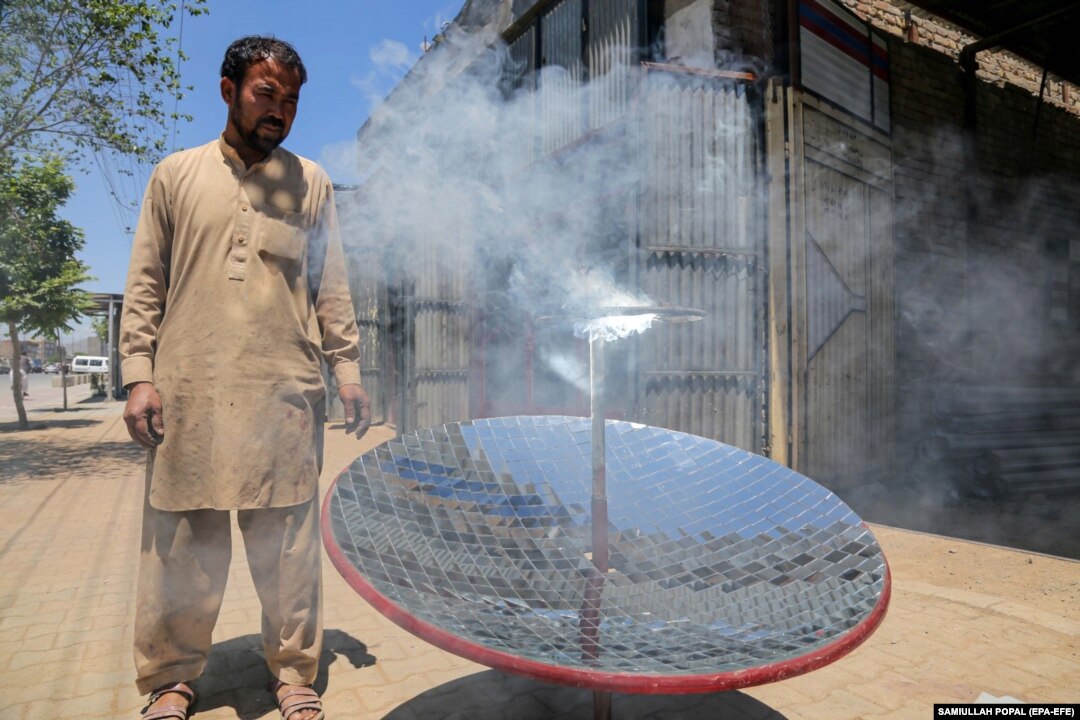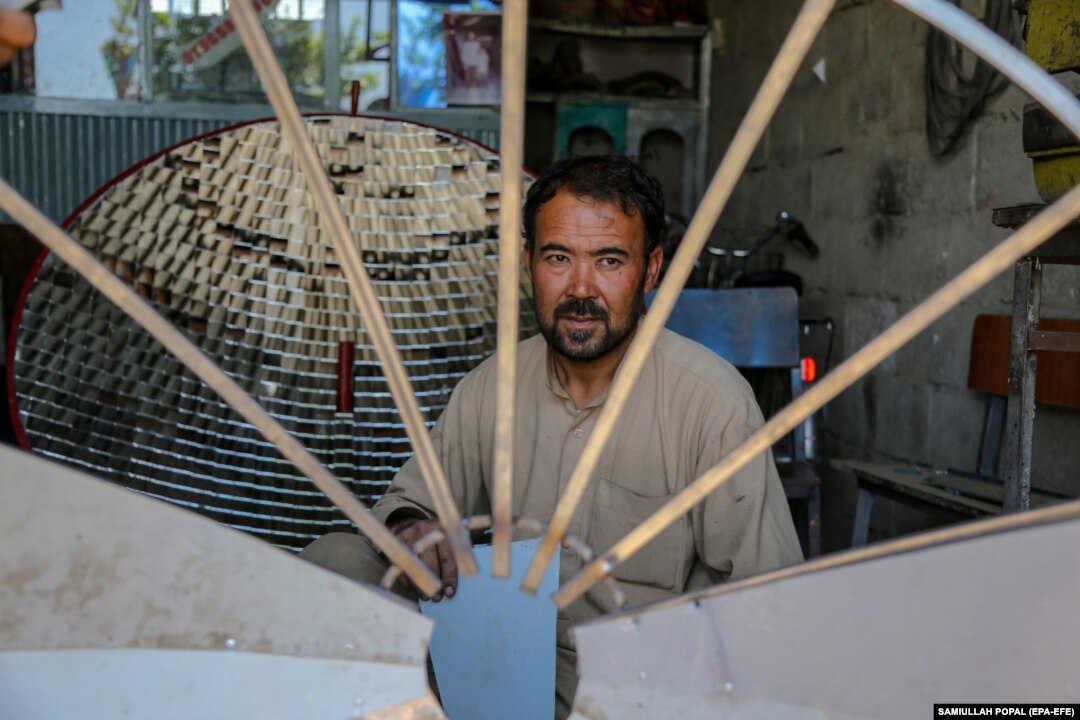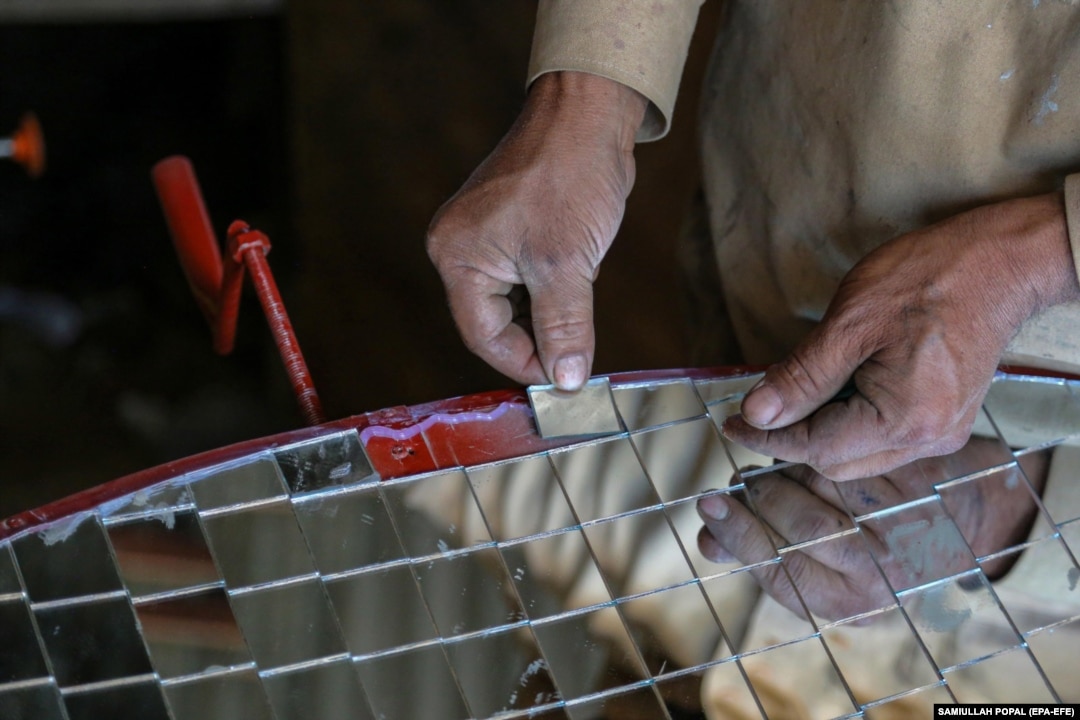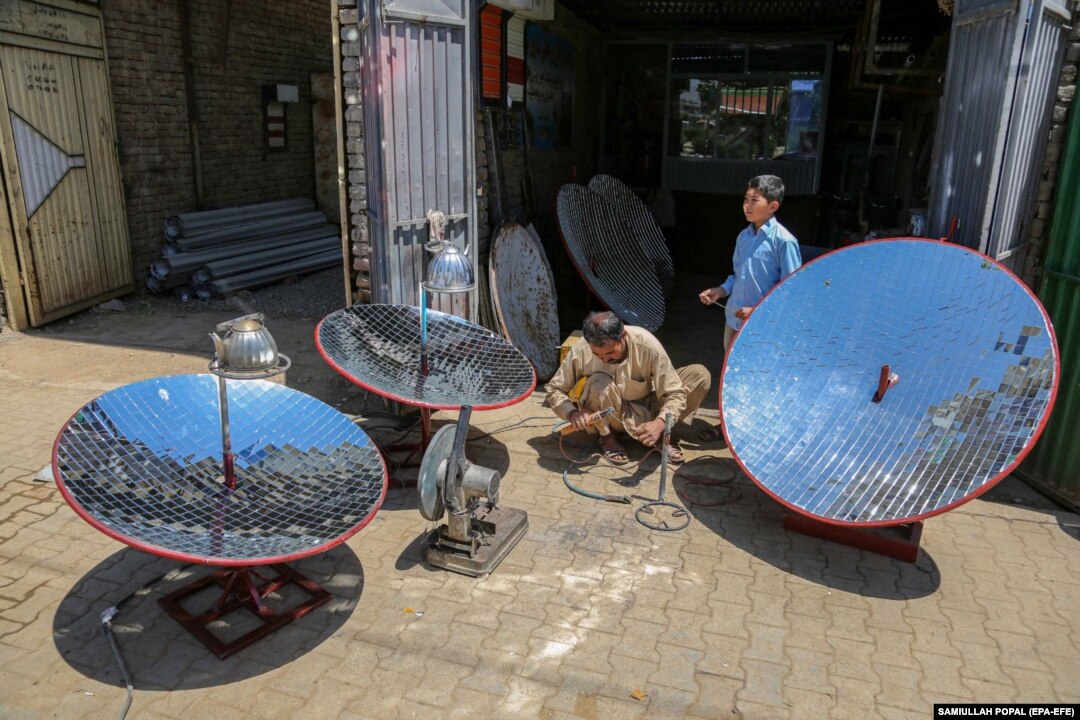Harvesting The Sun: Afghan Man Builds Parabolic Solar Stoves By Hand

Local blacksmith Ghulam Abbas tests a solar stove that he built at his workshop in Kabul on May 8. The parabola-shaped solar heaters have grown in popularity in Afghanistan as the country is in the grip of a chronic energy crisis.

Abbas uses a simple design that resembles a satellite dish.

Each mirror is glued onto a curved frame that reflects and concentrates sunlight toward a cooking pot or a metal sheet.

Abbas says that a large solar stove can boil water within 18 to 20 minutes. His smaller-sized models are more popular most likely due to people having to transport them to distant regions.
With orders coming in from around Afghanistan, Abbas is asking the cash-strapped Taliban government to promote its usage, as many Afghans lack the resources to purchase coal or wood.
The first documented use of a solar stove was by Swiss geologist and physicist Horace-Benedict de Saussure in 1767.
Abbas inspects mirrors on a solar stove. The French Foreign Legion also used them to boil water and prepare their meals in the 1870s. Their use continues today with people from countries like India and China employing them.
For impoverished Afghans, harvesting the power of the sun is an economical alternative to using costly and polluting fuels or cutting down trees for firewood.
Onlookers feel the heat of the sun as Abbas (center) tests his newest stove.
Proponents of solar stoves say that dishes can be prepared in the same amount of time as using a fireplace or gas stove, with the added benefit that they do not create pollution that leads to global warming.

